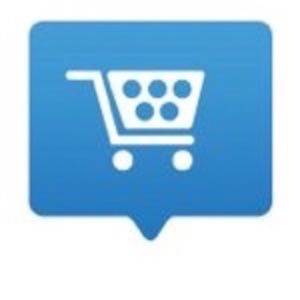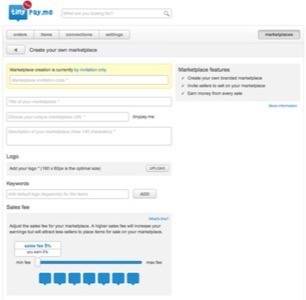In February of this year, TinyPay.me, a bootstrapped Dutch startup, launched the simplest tool around for selling goods online. It had a clean, single-page interface and didn’t even require account creation. At LeWeb in Paris this month, where it was among the finalists in the startup competition, it revealed its new direction. Right now (invitation below), any site owner can use TinyPay.me to create a branded C2C marketplace on which the site owner and visitors can sell products. Essentially, TinyPay.me is a build-your-own Etsy.

That’s exciting, but even more exciting is that early next year, it will be possible for site owners to use filters and tags to curate merchandise that is for sale on all of TinyPay.me, thus increasing their offering to their audiences with minimal effort. With this innovative distribution model, TinyPay.me will enable entrepreneurs to act as clearinghouses for products that appeal to their particular audiences. This platform may just be what long tail e-commerce has been waiting for.
Internet legend has it that eBay, the first C2C marketplace, came to be because the founder’s fiancée collected Pez dispensers and he wanted to build her a platform for trading them. The site lost its homey, flea market feel years ago, as power sellers and wholesalers gradually took it over. And it wasn’t until 10 years after eBay’s arrival that someone came along and put the warm and fuzzy back into the C2C marketplace model. That gutsy upstart we all know and love was Etsy, which targets the huge vertical market for handmade goods, a vertical that can’t be touched by either the hucksters who have overrun eBay or big brands.
Pamela Poole is a blogger, translator and tech writer, and founder of Francophilia.com, a social startup for Francophiles. Originally from California, she now lives in Paris, where her involvement in the vibrant startup scene keeps her from spending too much time in the bakeries.
Etsy worked so well that me-toos continue to pop up, like Bonanza (formerly Bonanzle), which just bought and merged with another relatively new one, 1000 Markets. In Europe, we have Dawanda and a recent addition, A Little Market, which somehow managed to raise €500,000 in France this year in what is starting to look like a rather glutted market. But maybe there’s no end to the demand for crocheted beanies.
Now, thanks to TinyPay.me, entrepreneurs who might want to sell something besides Betty Boop dog tag jewelry (which I love as much as the next girl, don’t get me wrong) will be able to create their own C2C marketplaces easily and at no cost.
Here’s how it works: Say a seller called Kiteboy writes a blog about kites that’s read by tens of thousands of kite enthusiasts. Chances are a lot of these people design, build, sell, trade and collect kites. He creates a TinyPay.me marketplace, adds his logo, a background, a little description, and picks a URL: kiteboy.tinypay.me. Kiteboy can sell his own kites, of course, but the really beautiful thing is that every single one of Kiteboy’s visitors can sell stuff his audience would like on his marketplace too.

TinyPay.me gets from 5% to 15% of every sale, depending on the percentage site owners set for their own commission (up to 35%). Everyone who lists an item on TinyPay.me can choose to donate a part of the profit, both theirs and TinyPay.me’s, to a charitable organization

















